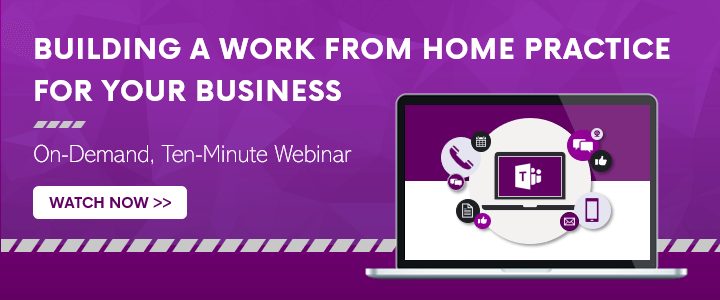
Is it too early to start thinking about how you’re going to re-energize your business? I don’t think so. We’re hearing a lot more at both the federal and state level about commissions being formed to address economic reentry.
It feels like it’s been forever since the various government entities starting mandating social distancing and other economic actions to flatten the curve. Amazingly, in one form or another, it’s been nearly two months. It’s amazing just two months has done to many organizations.
Regardless of whether your organization was an Essential Industry or not, everyone’s been affected. Skyrocketing unemployment, furloughs, facility closures, supply chain disruptions, and massive spending freezes and budget cuts are the order of the day.
Like most of you, I’m anxious to get back to work and attempt some return to normal. It’s going to take time, be regionally specific, and come at different paces depending on your industry and a hundred other factors, but two things are for certain:
One, it won’t be fast.
And two, our businesses and the economy are going to look much different.
There are, however, things we can do and consider as we attempt a return to “normal”.
Because we deal in IT, I’ll address how we’re approaching it from an IT standpoint. Finance, HR, Logistics, and Production are subjects better addressed by experts in those fields.
Software and Subscription Licensing
With adjustments to headcount, work-from-home, and data center, now is the right time to take a serious look at your existing licensing.
This is a great area to save some money.
Not only are many vendors (like Microsoft) offering special deals and programs to help during these times of economic uncertainty, but your needs are changing given the dynamics of your workforce and how you’ll do business in the future. We’re advising all our clients to perform a license audit. Since so many tools are subscription based, fixing versions and seat counts now will compound savings over the months to come.
Staff Reduction/Adjustments
If you’re one of the organizations that hasn’t had staffing adjustments, you’re lucky. If you’re not, there are several issues to consider when ramping back up:
- Do my employees have the correct tools to do their job?
- Is their platform up to date? Is everyone on the same version and are our security measures updated and running?
- Do we need to address training or re-training?
- Do we need to adjust policies or procedures as we bring the workforce back?
- Do we have the right people to address the technical reintegration?
Operational Expense Shifts/Comprehensive Review of IT Spending
Now is the perfect time to critically assess what you’re spending on IT. With temporary and permanent changes to how you do business, and changes to how you service your customers, taking a comprehensive look is prudent.
The COVID compliance requirements have taught us a lot about being efficient and flexible. We’ve learned that we can run our business differently. Why not take a little time to reflect on that and develop some new strategy?
Anyone that has made the shift to an operational IT model knows that it’s relatively simple to turn-up or turn-down resources as needed. Most of the vendors we work with allow at least monthly adjustments to licensing counts.
That agility translates into only spending what you need. Those with long-term license subscriptions are locked in and can’t adjust. Most of the major software vendors want their customers on monthly subscriptions. I’ve seen several of them willing to adjust a long-term contract into a subscription.
Have you considered your datacenter architecture? Much like user subscriptions, servers and storage can be moved to the cloud. Platforms like Microsoft Azure can be scaled up and down depending on demand in minutes.
There’s the added benefit of not having to maintain the physical infrastructure and facilities. If your staffing adjustments included the talented people running those functions, that leaves a glaring hole in your operational framework and business continuity.
Based on our customers, we’re not only seeing a continued shift towards an operational IT model, but we’re also seeing a heightened interest in managed services. Having a third-party managed services provider to manage or co-manage your IT environment brings those expenses into the operational cost model, permits flexibility, and addresses the gaps in talent or availability.
Mandates to Social Distancing
There are going to be new requirements for employee separation if they’re in the office. What does that do to your office layout? Will you have to move work areas? Do you have too much or too little space? What other protective measures will you need to implement to be compliant and make sure your employees are safe?
For example, let’s consider your network. How is your network delivered in your office? If it’s wired, you may need to bring in a network cabling company to restring network cable. Or, as a more cost-effective approach, you may need to make modifications to your network to support secure wireless access.
If your new office model is to increase the number of at-home workers, or their frequency working from home, you may consider reworking your office layout to implement “hoteling.”
Companies that choose to Hotel their office workers are going to benefit greatly from any enhanced wireless network while also reducing their physical footprint to cut costs in more than one way. One company we work with that can design and implement a hoteling strategy is Teammates Commercial Interiors in Colorado.
What to Keep in Mind as Your Business Recovers from COVID-19
There are a couple of key take-aways from this discussion.
First, give serious thought to how you can continue to shift your IT spending to a subscription model to drive better flexibility and cost control. Be agile during these times of uncertainty.
Second, adapt to changes in how business gets done. While COVID-19 represents an unprecedented time in modern history, change and the unexpected is a constant in modern life. Understand how your organization can benefit from the lessons learned over the last few months and don’t be afraid to make some of the changes permanent.
Where should you start? While the answer will vary based on your specific business and industry, there are a few paths that make sense based on your specific goals. If you’d like to take some of the changes you’ve made and keep them going, we suggest considering how you can continue to enable remote work for your employees by watching our Enabling Remote Work Ten-Minute Tech Talk.
If you’d like to put your focus on flexibility and adaptability, consider how Managed Services can increase business agility to keep you better prepared for unexpected events.
Tim Krueger, CEO





